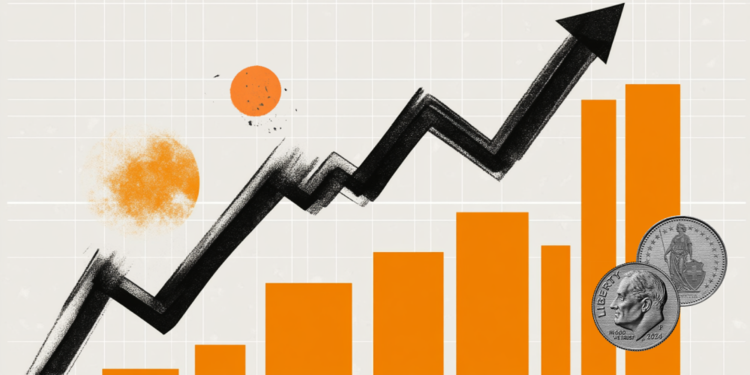In 2020 she was 52nd, in 2023 fifth and now she triumphs. Bergamo is, for the first time in 35 years at the top of the annual ranking Sun 24 Hours on the quality of life of the Italian provinces. The survey measures well-being in Italian territories through 90 indicators from certified sources, divided into six thematic categories. The rest of the podium is occupied by the provinces of Trento and Bolzano, awarded several times in past years and often among the top three. Bolzano rises ten positions compared to 2023 thanks to the results in «Demography, health and society», high bank deposits, the reduced number of families with low ISEE and the high employment rate.
The top ten
Among the top ten there are many provinces from the North-East. The most present regions are Trentino Alto Adige, Lombardy and Veneto. Two Lombard provinces are fourth and fifth: Monza and Brianza and Cremona. Followed by Udine, then Friuli-Venezia Giulia, then Verona and Vicenza. In ninth place is the only metropolis, Bologna which was second last year. Tenth Ascoli Piceno. Milan is 12th. Rome is 59th.
The South
In the queue are the provinces of the South. Last is Reggio Calabriabut from position 83 onwards there are only provinces in the South. Immediately before the city of the strait there are Naples and Crotone. Palermo occupies position number 100. In the North the worst performances are in Imperia and Savona. In the South, however, there are positive signs such as the increase in GDP per capita of Palermo, Caltanissetta and Nuoro, the growth in tourist presences and economic attractiveness.
The big cities
All the big cities are going down because the GDP per capita is slowing down and the cost of living is increasing. The cost of rent weighs heavily and social gaps are growing. Big cities have lost residents precisely because of high rental costs. After Bologna and Milan, the third large city present is Florence, 36th, but first in the fourth edition of the Index of Quality of Life for Women. Following are Cagliari, which loses 21 positions and is 44th, Venice 46th, Genoa 54th, Turin 58th just above Rome, Bari 65th.
Milan remains first in terms of GDP in relation to the population, but the positions of the South are improving. Gaetano Fausto Esposito, director of the Guglielmo Tagliacarne Study Center, explains: «The metropolitan areas remain the center of gravity of the production of wealth: 41% of the national GDP is concentrated in these 14 territories and Rome and Milan alone account for around 20 percent. Almost 80% of the added value of large cities comes from the market and public tertiary sectordriven by growing tourism.” The major urban centers are in the ranking for «Justice and security». The smaller provinces are seeing an increase in liveability levels, thanks to the greater accessibility of rentals and sales and the growing levels of wealth in the population.
The other rankings
Biella is first for Wealth and Consumption, followed by Lecco and Cremona. Last is Naples. For Business and Work Milan wins followed by Rome, Trieste and Bologna. In the queue is Taranto. Those that win in the Justice and Security sector are small provinces: Ascoli Piceno, Lecco, Como, Macerata and Aosta. The latest are Florence, Milan and Naples. For Demography and Society Bolzano wins with Milan third, Isernia brings up the rear. Brescia is first for Environment and Services, Reggio Calabria last. For Culture and Leisure Trieste is first, Enna last.
The city of women
Florencewhich has a mayor for the first time, Sara Funarothe province in first place for the quality of life of women, an index that arises from the average of 12 indicators, “from the employment rate to the percentage of female businesses, from the share of female municipal administrators to the number of paid days per year”. The podium is occupied by three provinces of Central Italy: after Florence, there are Arezzo and Perugia.
The South is in the queue, with Crotone last. It is above all female employment that weighs heavily. «The employment rate in some northern provinces (with the spearhead of Bolzano) is aligned with the levels of Germany (74.3%) and is better than the EU-27 average (66.3%), while in the South there is little employment more than one in three women. The gap between the male and female employment rate, which on a national scale has reduced and fluctuates around 18 percentage points, drops to 39 points of difference in Barletta-Andria-Trani and exceeds 32 points in Taranto and Crotone. While it is 8 points in Aosta and remains under ten points in Belluno, Biella, Bologna and Trieste as well as in Ascoli Piceno” explains Il Sole 24 Ore. However, there are positive signs such as the high rate of female businesses in Benevento and the high number of graduates in Isernia and Pescara.
Source: Vanity Fair
I’m Susan Karen, a professional writer and editor at World Stock Market. I specialize in Entertainment news, writing stories that keep readers informed on all the latest developments in the industry. With over five years of experience in creating engaging content and copywriting for various media outlets, I have grown to become an invaluable asset to any team.







